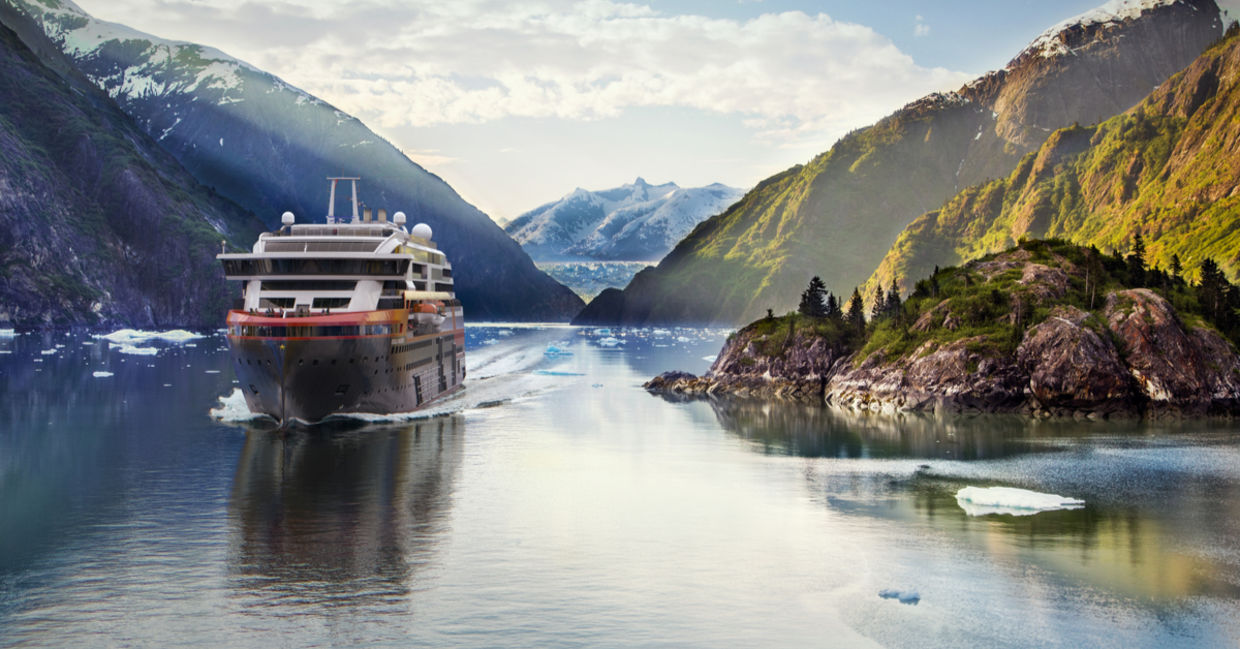
Hurtigruten’s MS Roald Amundsen is the first of the line’s two planned hybrid expedition vessels. (Courtesy of Hurtigruten/Hurtigruten AS)
Anyone who has ever taken a cruise will tell you that it is an astounding experience. You spend your days on an exciting ship, travel the seas, and get to see far away places.
The less-glamorous side of cruise ships is the massive amount of fossil fuels they need to burn. When divided between all passengers, maritime transportation is actually far more polluting than land transportation. Modern ships, however, can already run on a large variety of fuels, such as natural gas, electricity, and biogas.
Hurtigruten, a Norwegian cruise, ferry, and cargo operator, recently announced that it will convert to using dead fish (among other organic waste) to power its ships. Of course, the fish will have to be converted into liquefied biogas (LGB) first.
Finding enough leftovers of processed fish shouldn't be a problem since Norway with its coastline of 83,000 km has an abundance of fish. Norway is the largest exporter of fish in the world and Norwegians also consume a lot of fish, so there is a plentiful supply of processed fish waste available.
The 125-year-old company operates 17 ships and is committed to operate as sustainably as possible by abiding by the Sustainable Development Goals of the UN that apply to its industry.
"What other see as a problem, we see as a resource and a solution. By introducing biogas as fuel for cruise ships, Hurtigruten will be the first cruise company to power ships with fossil-free fuel," Hurtigruten CEO Daniel Skjeldam said in a company press release.
But this is just the beginning. "Sustainability will be a key driver for the new era of shipping and the travel industry. Hurtigruten’s unmatched investments in green technology and innovation sets a new standard for the whole industry to follow," said Skjeldam.
By 2021, the company plans to run at least six of its ships using biogas, large battery packs that can be used to store energy made from renewable resources, and liquefied natural gas.
Hurtigruten is already building three new hybrid-powered explorer ships that will be delivered one a year for the next three years. "Our ultimate goal is to operate our ships completely emission free," said Skjeldam.
The company has also banned all unnecessary single-use plastics as a first step in becoming plastic free.
The cruise industry is huge, and it is estimated that 27.2 million people will have taken a cruise this year. That's a lot of ships and a lot of harmful emissions. Hurtigruten is setting itself up to become a completely green company.
If the industry follows the company’s lead, as Hurtigruten hopes it will, this would greatly aid in meeting the UN’s climate change goals and greening up our planet.
YOU MIGHT ALSO LIKE:
Renewable Energy Is Now Cheaper Than Fossil Fuels
Portugal Sets Record for Generating Renewable Energy
Norway Just Took the Lead in Creating Zero Emission Sea Zones







